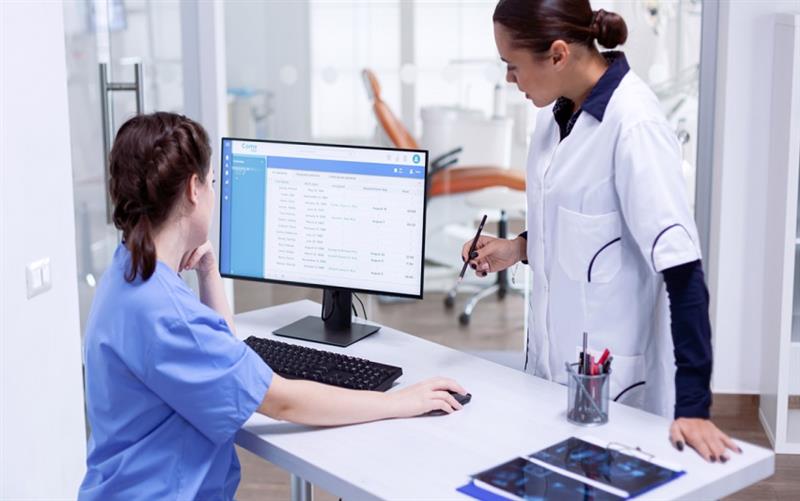
A useful tool for raising patient satisfaction and involvement is medical software. Healthcare practitioners can establish a more patient-centered approach by enhancing communication, customizing care, improving information access, streamlining administrative procedures, and consistently asking patients for input. The use of complex medical software will become more and more essential as technology develops in order to provide patients with gratifying, high-quality healthcare experiences.
Patient happiness and engagement are now critical in the changing healthcare environment. Medical software, which is transforming the way healthcare providers communicate with patients and offer care, is a major force behind this change. Here's how using medical software improves patient pleasure and engagement:
1. Simplified Interaction
Channels of Effective Communication:
Patient portals, video consultations, and secure messaging are just a few of the communication channels that medical software offers. These technologies promote a sense of connection and trust by making it easy for people to ask questions of and receive prompt answers from their healthcare providers.
Reminders for Appointments and Follow-Ups:
Reminders and follow-up messages that are sent automatically help patients keep informed about their treatment plans and minimize missed visits. Patients who get proactive communication feel more involved and cared for throughout their healthcare journey.
2. Tailored Medical Attention
Medical Records Accessible:
Through patient portals, people may always access their test results, treatment plans, and medical information. Patients are empowered to actively manage their health and make educated decisions about their care thanks to this transparency.
Customized Therapy Schedules:
Healthcare professionals can design individualized treatment programs for individuals using medical software, taking into account their particular medical histories and present situations. Patient satisfaction and treatment outcomes are enhanced by this individualized approach.
3. Increased Practicality
Online Timetable:
Without contacting the clinic, patients can make, change, or cancel appointments online. Patients can more easily schedule their medical appointments and administrative workloads are lessened because to this convenience.
Services for Telehealth:
Patients can consult with their healthcare providers from the comfort of their own homes because to telehealth capabilities. Those with hectic schedules, chronic illnesses, or mobility impairments can particularly benefit from this.
4. Better Instruction for Patients
Resources for Education:
Educational resources regarding patient illnesses and treatments, like as articles, videos, and tutorials, are frequently included in medical software. Giving patients access to trustworthy information improves their comprehension and motivates them to take an active role in their care.
Engaging Instruments:
Patients can monitor their health and follow their treatment regimens with the aid of interactive tools such as wellness trackers, medication reminders, and symptom checkers. These resources encourage patients to take charge of their own care and enable them to do so.
5. Improved Care Coordination
Teams for Integrated Care:
Healthcare providers can collaborate and communicate more easily thanks to medical software. More thorough and effective patient care can result from integrated care teams' easy access to patient data, ability to discuss treatment options, and ability to coordinate care.
Suggestions and Check-Ins:
When a patient needs a reference to a specialist, automated referral systems make sure that the appointment is made quickly and effectively. Patient satisfaction is increased as a result of shorter wait times and continuity of care.
6. Improved Privacy and Data Security
Safekeeping of Data:
To safeguard patient data, medical software uses cutting-edge encryption and security protocols. Patients' faith in the healthcare system is increased when they know that their private information is secure.
Observance of Regulations:
Patient data is managed responsibly and ethically when laws like the Health Insurance Portability and Accountability Act (HIPAA) are followed. This dedication to privacy increases patient pleasure and confidence.
7. Health Monitoring in Real Time
Integration of Wearable Technology:
Wearable technology, such as smartwatches and activity trackers, can be integrated with medical software. These gadgets give useful information to patients and healthcare professionals by continuously monitoring vital signs, physical activity, and other health parameters. Early identification of possible health problems and prompt intervention are made possible by this ongoing monitoring.
Handling Chronic Illnesses:
Medical software provides tools to help people with chronic diseases better track and manage their health. While medical professionals may track their progress and modify treatment programs as needed, patients can record their symptoms, medication adherence, and lifestyle modifications.
8. Improved Availability
Support in Multiple Languages:
Patients who don't speak English can receive healthcare services more easily because to medical software's multilingual capability. This function makes sure that patients' pleasure and involvement are not hampered by language limitations.
Characteristics of Accessibility:
Patients with visual or hearing impairments can benefit from features like high contrast settings, font size adjustments, and screen readers. All patients will be able to use the program to its full potential thanks to these accessibility choices.